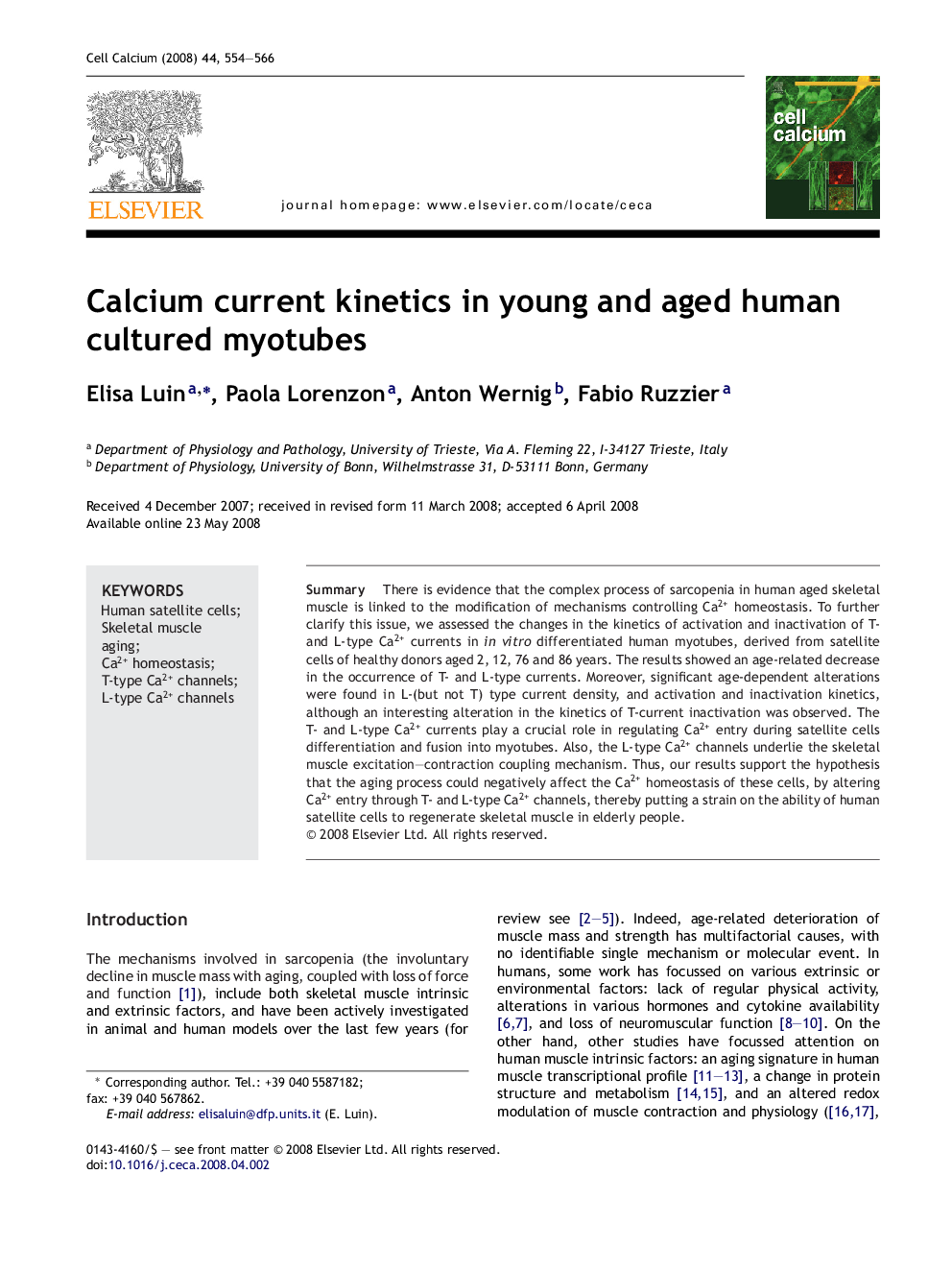| Article ID | Journal | Published Year | Pages | File Type |
|---|---|---|---|---|
| 10926445 | Cell Calcium | 2008 | 13 Pages |
Abstract
There is evidence that the complex process of sarcopenia in human aged skeletal muscle is linked to the modification of mechanisms controlling Ca2+ homeostasis. To further clarify this issue, we assessed the changes in the kinetics of activation and inactivation of T- and L-type Ca2+ currents in in vitro differentiated human myotubes, derived from satellite cells of healthy donors aged 2, 12, 76 and 86 years. The results showed an age-related decrease in the occurrence of T- and L-type currents. Moreover, significant age-dependent alterations were found in L-(but not T) type current density, and activation and inactivation kinetics, although an interesting alteration in the kinetics of T-current inactivation was observed. The T- and L-type Ca2+ currents play a crucial role in regulating Ca2+ entry during satellite cells differentiation and fusion into myotubes. Also, the L-type Ca2+ channels underlie the skeletal muscle excitation-contraction coupling mechanism. Thus, our results support the hypothesis that the aging process could negatively affect the Ca2+ homeostasis of these cells, by altering Ca2+ entry through T- and L-type Ca2+ channels, thereby putting a strain on the ability of human satellite cells to regenerate skeletal muscle in elderly people.
Related Topics
Life Sciences
Biochemistry, Genetics and Molecular Biology
Cell Biology
Authors
Elisa Luin, Paola Lorenzon, Anton Wernig, Fabio Ruzzier,
